Microsoft Planner vs Asana
Learn more about your options and pick the best tool for your team.
Unsure whether to choose Microsoft Planner or Asana? You've come to the right place.
If you are evaluating project management tools, you will likely find Planner and Asana on your shortlist. Both tools are highly popular and are used by thousands of organizations, teams, and individuals across the globe.
But which tool should you choose for your business? In this article, we will take a closer look at both Microsoft Planner and Asana and examine their strengths and weaknesses to help you make the right decision for your company.
Microsoft Planner and Asana compared
The main difference between Microsoft Planner and Asana is the level of complexity and the range of features they offer.
Asana stands out for its robust feature set, including task dependencies, advanced project timelines, and customizable project views. It caters to teams with intricate projects that require detailed planning and tracking. Asana's flexibility allows for a more tailored approach to project management, accommodating various workflows and methodologies.
On the other hand, Microsoft Planner keeps it fairly basic and focuses on fundamental task management and straightforward project tracking.
Ultimately, it will all come down to your unique needs, preferences, and workflow, as there is no one-size-fits-all solution when it comes to productivity software. And if you're having trouble choosing between Asana and Microsoft Planner, keep in mind that they aren't your only options. There are many other excellent tools that may turn out to be an even better fit for your needs.
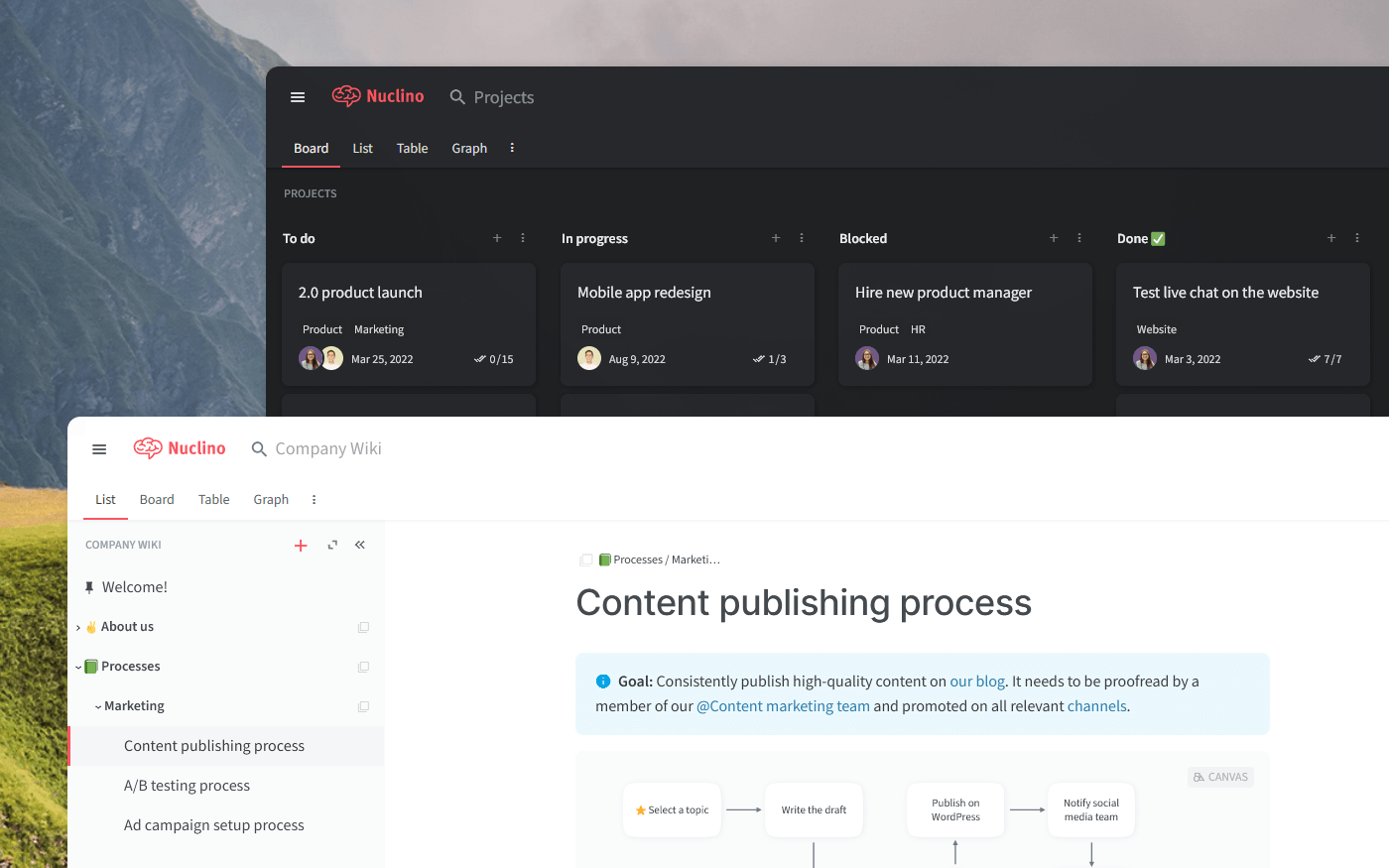
To make the most informed decision, let's first dive deeper into what Planner and Asana have to offer, taking into account their strengths, limitations, notable features, pricing, and user reviews. We will also have a look at other alternatives you may want to consider.
Microsoft Planner
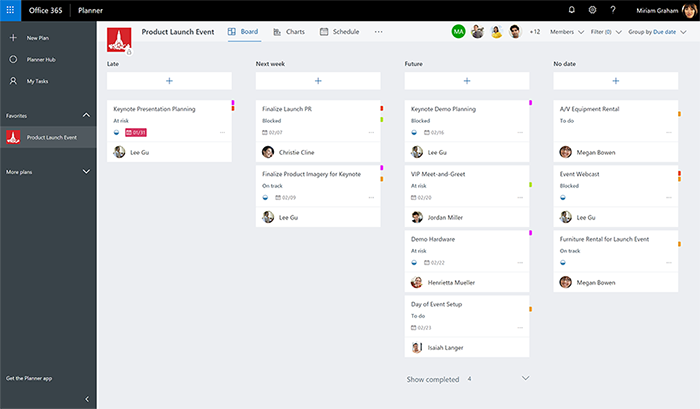
Pricing: Starting from $5/user/month
Rating on Capterra: 4.3/5
Microsoft Planner is a relatively new addition to the Microsoft 365 suite. It was introduced in 2016 to provide a simple and straightforward project management solution within the Microsoft ecosystem.
Like Asana, Microsoft Planner allows users to create plans, assign tasks, share files, communicate and collaborate with other users, and receive progress updates. It's less feature-rich than Asana, but its interface will likely feel familiar and comfortable to anyone who has experience with Microsoft apps.
Microsoft Planner's key strength lies in its integration with other Microsoft 365 apps. For example, you can turn emails into tasks in Planner, associating them with specific projects or deadlines. You can also create tasks directly from conversations within Microsoft Teams, transforming discussions into actionable items in Planner without switching between the apps.
While Asana offers a tiered pricing structure based on features and team size, Microsoft Planner is included in Microsoft 365 subscriptions, making it a cost-effective choice for organizations already using the Microsoft ecosystem.
Why you might prefer Microsoft Planner over Asana:
Microsoft Planner is included in Microsoft 365 subscriptions, making it a more cost-effective choice for organizations already using the Microsoft ecosystem.
Planner is tightly integrated with other Microsoft products, such as Teams and Outlook.
Planner is a more straightforward tool and provides just enough functionality for basic task management, in contrast to Asana's more complex capabilities.
What users say about Microsoft Planner:
"A great, lightweight task and project management tool for M365 users. Planner is a great starting point for shared tasks and may be a perfect long-term solution for M365 users. For those looking for depth of features or more robust task/project management functionality, you may need to step up to Project or look elsewhere (e.g. Asana, etc.). But like most things Microsoft - they shipped a viable product, but are stuck on building new functionality and innovation. It has come a long way, but waiting for improvements can be painfully slow."
Looking for more tools similar to Microsoft Planner? Check out this list of best Microsoft Planner alternatives.
Asana
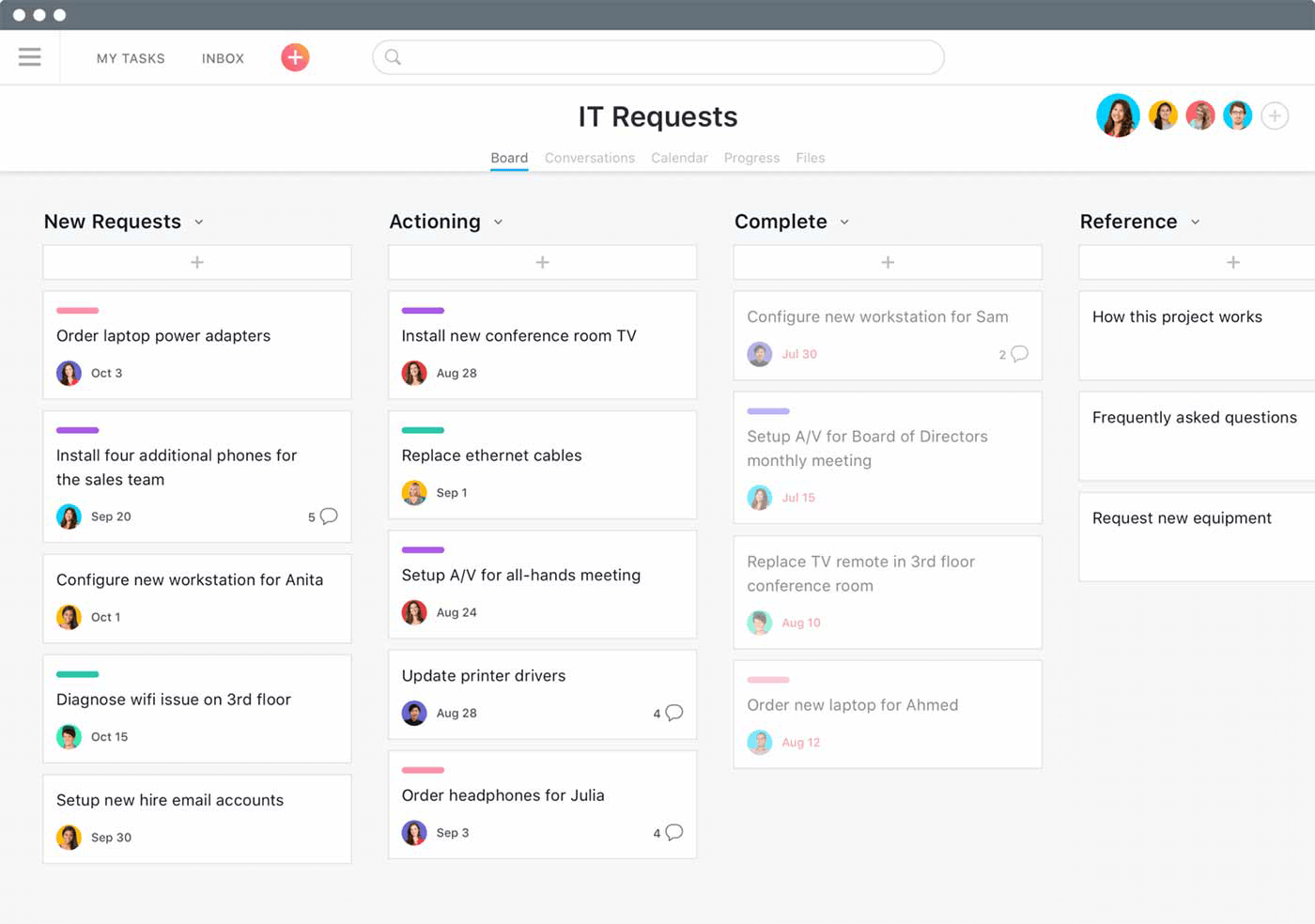
Pricing: Free, advanced features starting from $10.99/user/month
Rating on Capterra: 4.5/5
Asana stands out with its robust task management capabilities, timeline views, and integrations with various third-party apps. It's a great tool for those who value customization and scalability.
In Asana, users can organize tasks into boards, lists, or timelines, providing multiple views to suit different project needs. Routine tasks can be automated, saving time and reducing errors. Tasks can have dependencies, making it easy to keep track of what is blocking what. Overall, it's a powerful project management tool, that nonetheless comes with a modern, elegant, and intuitive interface.
Asana is a standalone project management tool and offers a tiered subscription model with a free basic plan and premium features in its paid plans. While it's considerably more expensive than Microsoft Planner, many teams find that it's worth the investment.
Why you might prefer Asana over Microsoft Planner:
Asana offers more advanced project management features, such as task dependencies and customizable project views.
Asana is more flexible, allowing teams to tailor the tool to their specific workflows and methodologies, compared to the more rigid structure of Microsoft Planner.
Asana comes with a more modern interface and releases new features at a faster pace than Planner.
What users say about Asana:
"This software grows with you as your needs expand. They don't overwhelm you with features. Instead, they let you add more functionality as you get comfortable. Great mobile app too. Responsive support. Works equally well for a small team and a large multinational with 1000s of users. Asana has automation to save time with routine tasks and to standardize work. As your organization adopts Asana you will notice a decreased email volume between employees. That means - better productivity and more focused work."
Looking for more tools similar to Asana? Check out this list of Asana alternatives.
Other alternatives
It should be mentioned that your options are not limited to just Microsoft Planner and Asana. There are many other great project management apps that can serve you just as well.
For example, if you like the simplicity of Planner but prefer the modern design of Asana, consider Nuclino. Lightweight by design, Nuclino doesn't have any cumbersome menus and seldom-used features and instead prioritizes the essentials. Setting it up takes less than a minute, and there's virtually no learning curve.
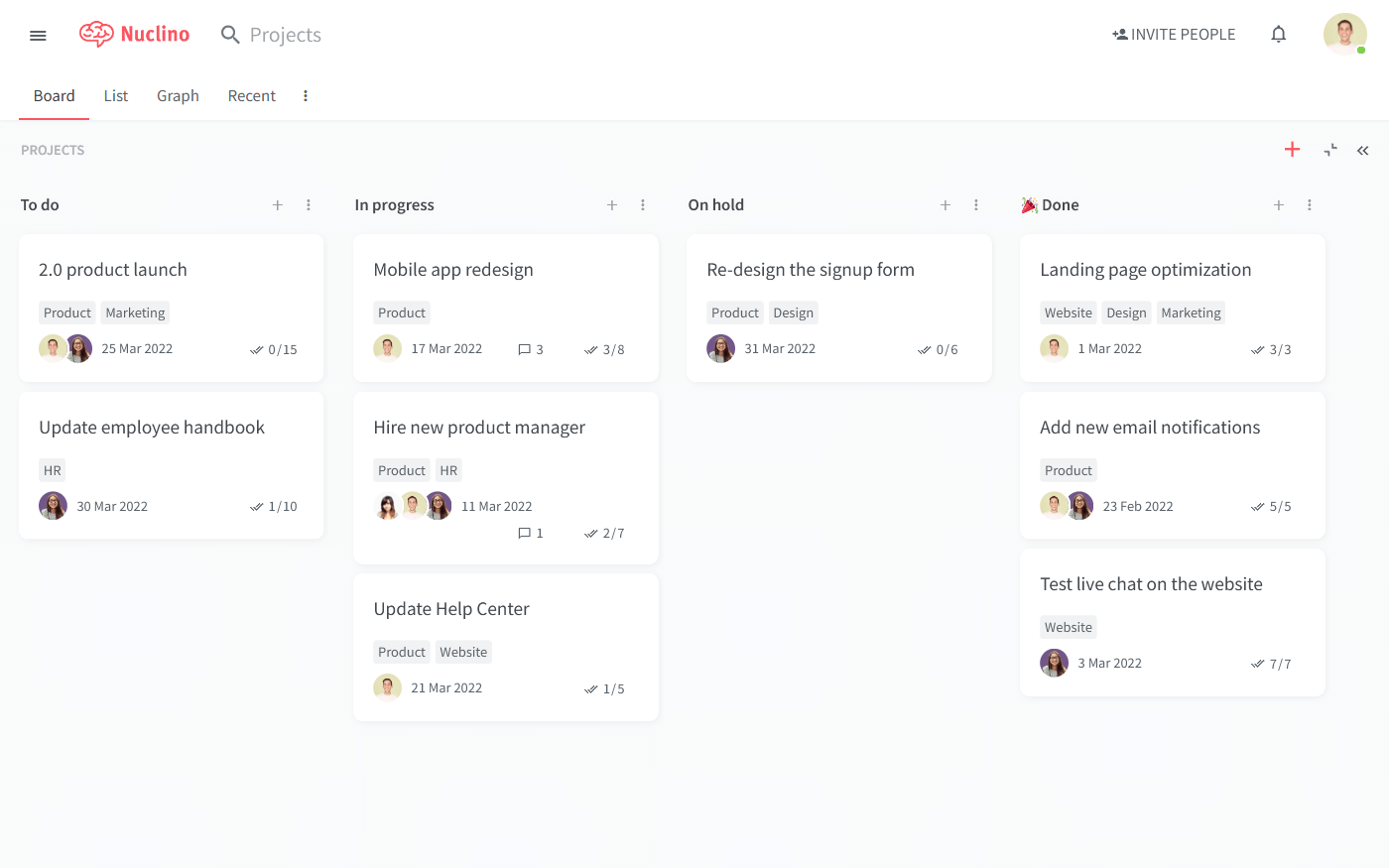
Like Asana, Nuclino allows you to visualize your workflow in different ways, including a Kanban board, a hierarchical list, a table, and a mindmap-style graph.
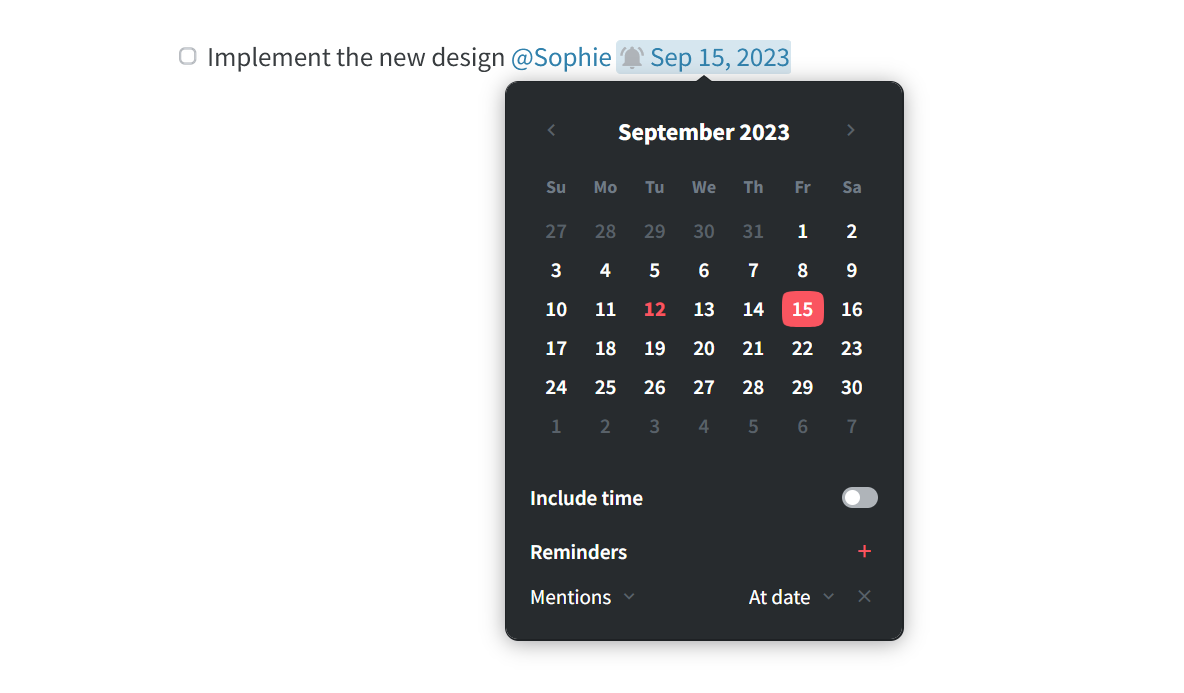
Every task item is its own long-form document that can be collaborated on in real time. You can add notes, create to-do lists with due dates and reminders, embed files, and more, preserving the context of every task and documenting important decisions. Feedback can be exchanged directly in Nuclino using comments and mentions.

Nuclino also offers built-in visual collaboration and allows you to add an infinite collaborative canvas to any project document. You can use it to create flowcharts and diagrams, brainstorm ideas using sticky notes, build moodboards, and much more.
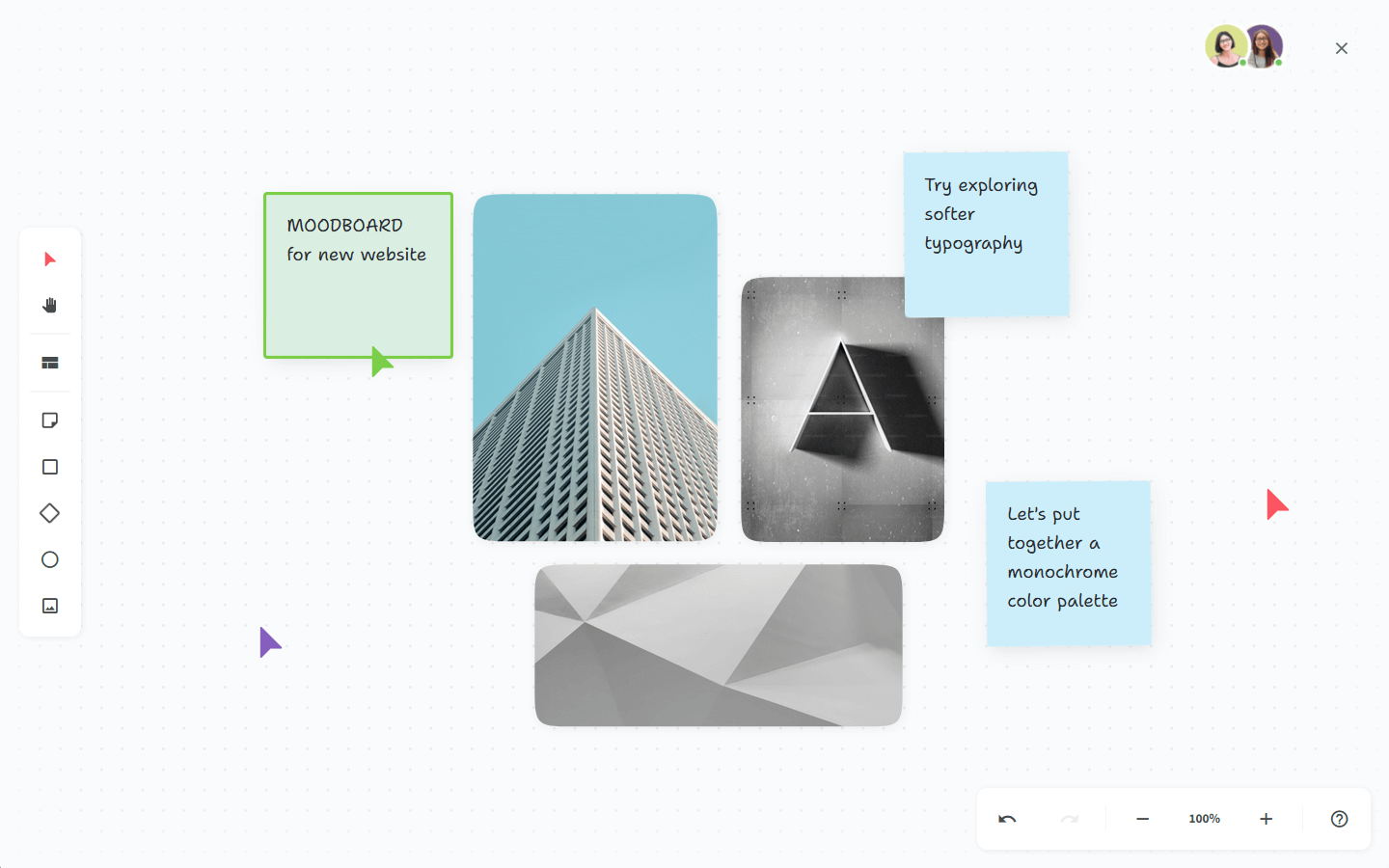
The flexibility of Nuclino makes it a great tool not only for managing your projects, but also for collaborative note-taking, creating internal documentation, building your knowledge base, and more. It's a unified workspace where you can bring all your team's knowledge, docs, and projects together in one place — like a collective brain.
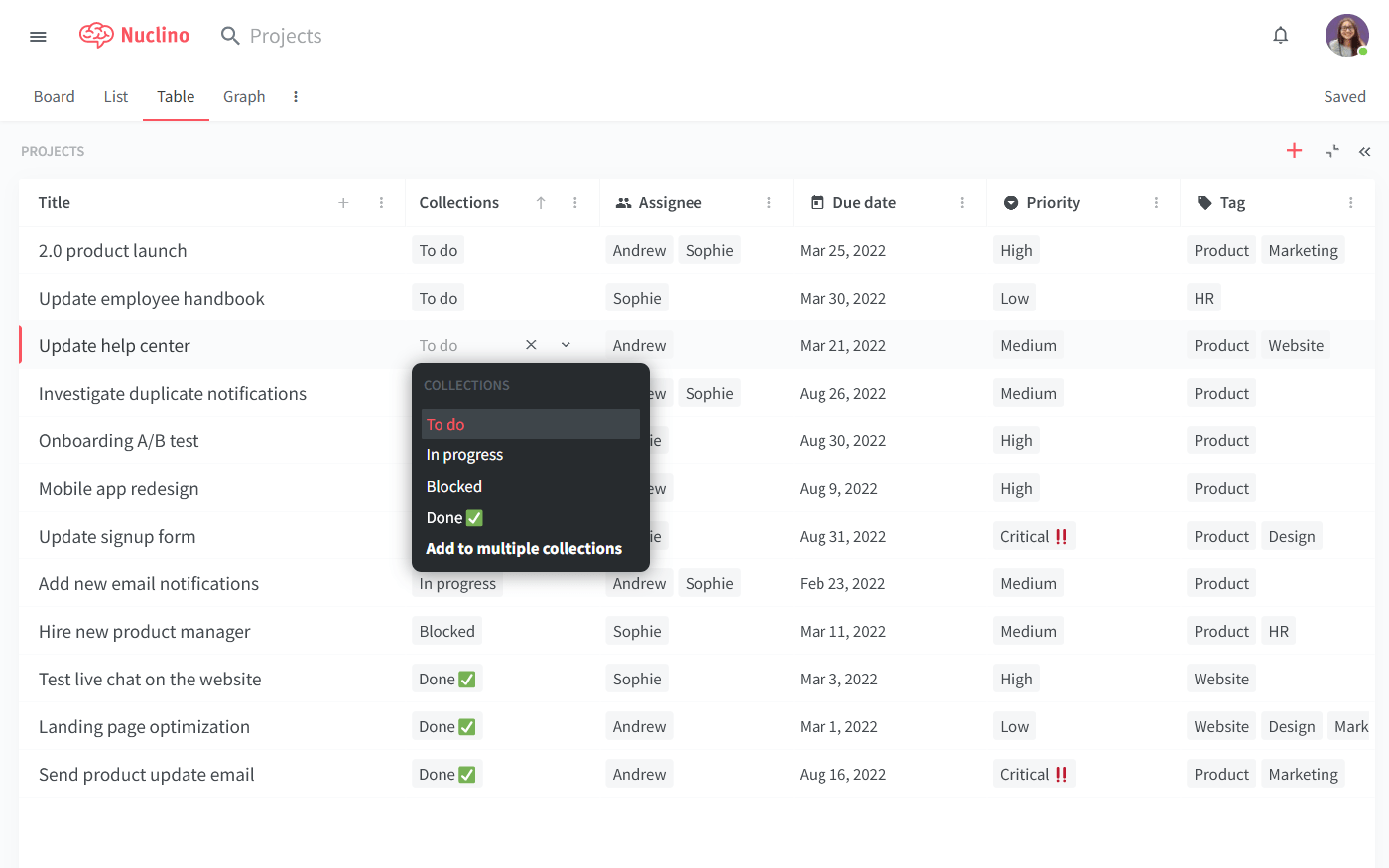
Microsoft Planner vs Asana: So which is better?
Between Asana and Microsoft Planner, Asana seems to be the more popular choice among users. However, both tools have their own strengths and weaknesses. The main advantage of Planner is its close integration with other apps in the Microsoft ecosystem, making it a more inviting option to some teams. If your organization is not using Microsoft products, you may be better off with Asana.
On the other hand, if you like the idea of bringing your projects and documentation together in one place, Nuclino may also be a great option for you.
We hope this article has made your decision a little easier. At the end of the day, the only way to be sure you are making the right choice is to thoroughly evaluate each tool together with your team.
Ready to get started?
